The 10 coolest luxury Muscle Cars from Buick and Oldsmobile
Luxury muscle cars began in the 1950s with cars like Chrysler’s 300 Letter Series, Studebaker’s supercharged Golden Hawk, and the 300-horsepower Buick Century. Oldsmobile was in there too, with its 300-hp Tri-Power J-2 Rocket engine option of 1957. However, with the exception of the Studebaker, these were full-size machines and the arrival of the mid-size 1964 Pontiac GTO rewrote the muscle car rulebook.
Studebaker was already on its last legs in 1964 and history by 1967, and Chrysler never got into the midsize muscle car game. But Buick and Oldsmobile sure did, and quickly. The Oldsmobile 442 debuted in 1964 as a rival for the GTO and Buick jumped a year later with Gran Sport versions of the Skylark and Riviera. The two GM divisions would go on to build some of the quickest, most powerful and best handling muscle cars of the era. Here are our choices for the coolest 10.
1965 Buick Riviera Gran Sport
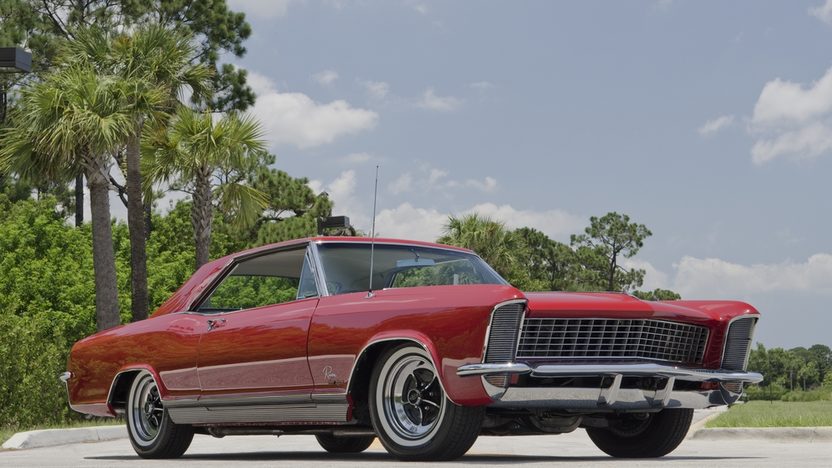
Some consider the first Buick Riviera, built from 1963 to 1965, to be the best looking car General Motors has ever produced. And in the design’s final year it was perfected with hidden headlights and the availability of Buick’s first high-performance Gran Sport package—option code A9. Under the hood was a new 425-cubic-inch Super Wildcat version of the Nailhead V-8. Equipped with two four-barrel 600-cfm carburetors the Nailhead made 360 hp and 465 lb-ft of torque at just 2800 rpm. The 425 engine was larger and more powerful than the Nailhead on the Skylark GS-400. Only 3354 Riviera Gran Sports were built in 1965, all with the Super Turbine 400 three-speed automatic transmission.
1966 Oldsmobile 442 W-30

In 1966 Oldsmobile upgraded the engine option for the 442 to a 400-cubic-inch V-8 with three two-barrel carburetors and introduced its first W-30 package. The standard 442, with a single four-barrel, was rated 350 hp. With tri-power induction, that rating jumped to 360 hp, which matched the GTO, and it pegged the cool meter when you opened the hood in the Pizza City parking lot. The W-30 package added cold air induction to the three Rochester carbs and a hotter cam, but the power ratings remained the same. The battery was moved to the trunk to make room for the extensive Outside Air Induction system made up of a dual snorkel air cleaner connected to scoops in the front bumper with four-inch diameter hoses. According to Hemmings, just 54 W-30 optioned cars were built in 1966, all with Muncie four-speeds. In 1967 the three-speed Turbo 400 became available and the W-30 got its signature red inner front fenders which would continue through 1971.
1966 Oldsmobile Toronado
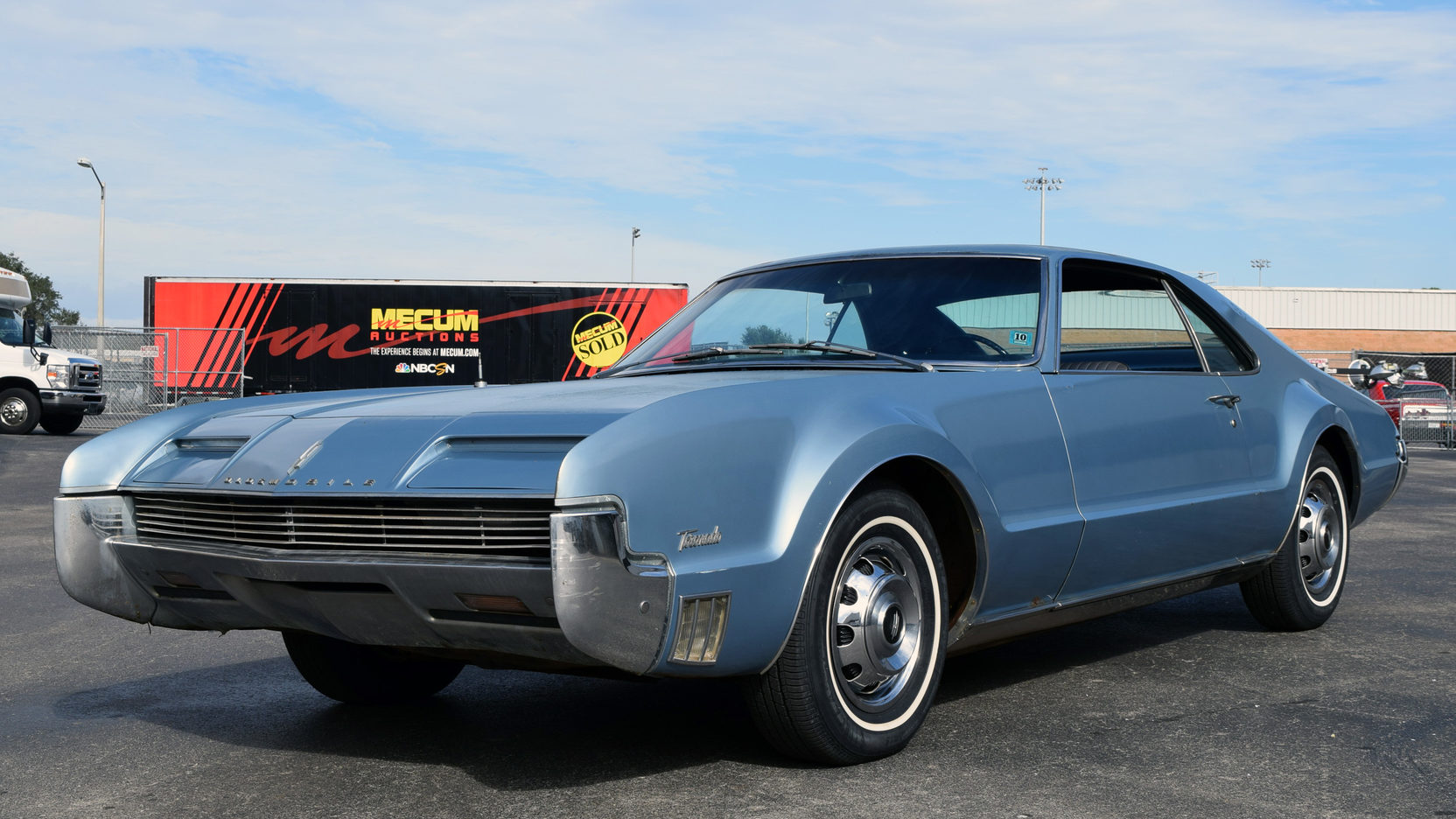
If the 1965 Buick Riviera isn’t GM’s best looking two-door hardtop of all time, a close second is the 1966 Oldsmobile Toronado. The Toronado marked GM’s first attempt at a front-wheel-drive muscle car. Inspired by the front-wheel-drive coffin nose Cords of the 1930s, the Toronado used chain drive to get power to its front tires. And there was a lot of power. Under the hood was a 425-cubic-inch Super Rocket V-8 connected to a special version of the Turbo 400 transmission which placed the tailshaft next to the torque converter and connected it to the Hy-Vo chain drive. The engine was Oldsmobile’s most powerful at the time with 385 hp and 475 lb-ft of torque. These cars are capable of very long front-drive burnouts.
1968 Hurst Olds

In the late 1960s all GM divisions building muscle cars—Chevy, Buick, Oldsmobile and Pontiac—were restricted to a 400-cubic-inch limit in mid-size or smaller cars. To get around this corporate mandate, Oldsmobile partnered with George Hurst, the man behind Hurst shifters. He wanted to put his name on cars and Oldsmobile wanted more cubes in its 442 model. A deal was struck and Oldsmobile shipped 515 442s without badging and as many 455-cubic-inch engines to Hurst for “conversion”. Demmer Engineering in Lansing, Michigan was hired to transplant the motors, but it was a ruse to satiate GM’s executives. The 455-cubic-inch engines, which were rated 390 hp and 500 lb-ft of torque, were actually installed at GM’s assembly line, where the cars were also painted Peruvian Silver, a color taken from the Toronado. The cars were shipped to Demmer, where they received black stripes and a black decklid. Hurst/Olds badges were installed along with a Hurst Shifter for the Turbo 400 automatic. Ram Air, with scoops under the front bumper, was standard.
1969 Hurst Oldsmobile
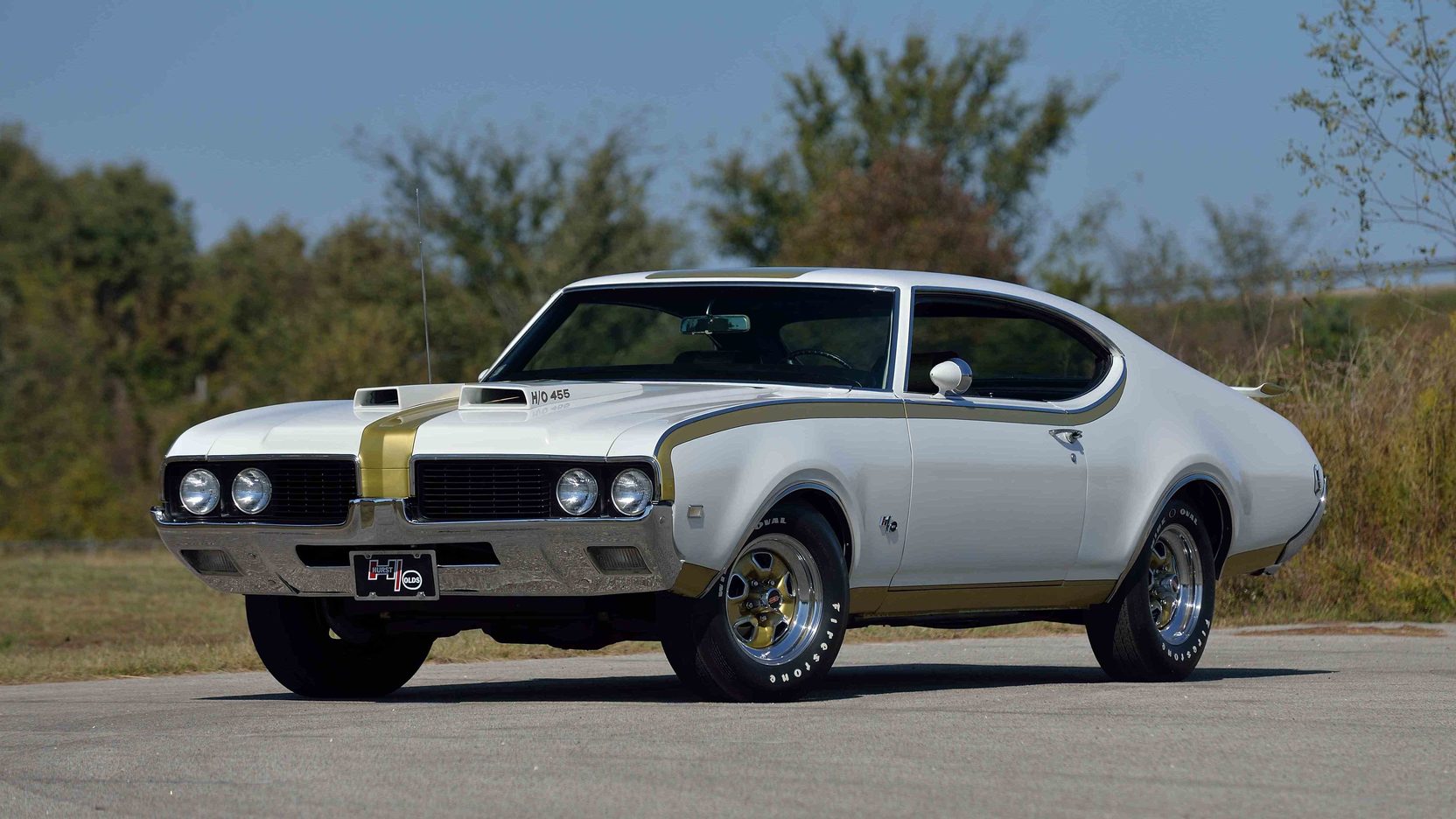
The meeting at Oldsmobile probably went something like this. “We did it and we didn’t get caught. Let’s do it again. Thank you for coming.” In 1969 Oldsmobile and Hurst went back to the same playbook, only this time they built 914 of their special 455-powered muscle cars, and they were able to dress it up the way George Hurst originally wanted to the year before. For 1969, the cars got the white and gold color scheme that would become iconic, as well as two massive functional hood scoops and a large rear spoiler. The Ram Air fed 455 was now rated 380 hp but kept its 500 lb-ft of torque at 3200 rpm. As before the engines were installed at the factory and there were no four-speeds.
1970 Oldsmobile 442 W-30

In 1970, GM’s silly cubic inch rule was lifted and every Oldsmobile 442 was 455-powered. The engine, which kept with its 10.5:1 compression ratio, was rated 365 hp and 500 lb-ft of torque at 3600 rpm and it could be backed by the Turbo 400 automatic or a Muncie four-speed manual. Buyers could also choose a coupe or convertible with the W-30 package, which added forced air induction with a new scooped hood and engine modifications, although the horsepower rating went up to just 370 hp, wink wink. Another cool new item was the optional W-27 aluminum differential which was 22 pounds lighter than the cast-iron unit.
1970 Buick GSX Stage 1
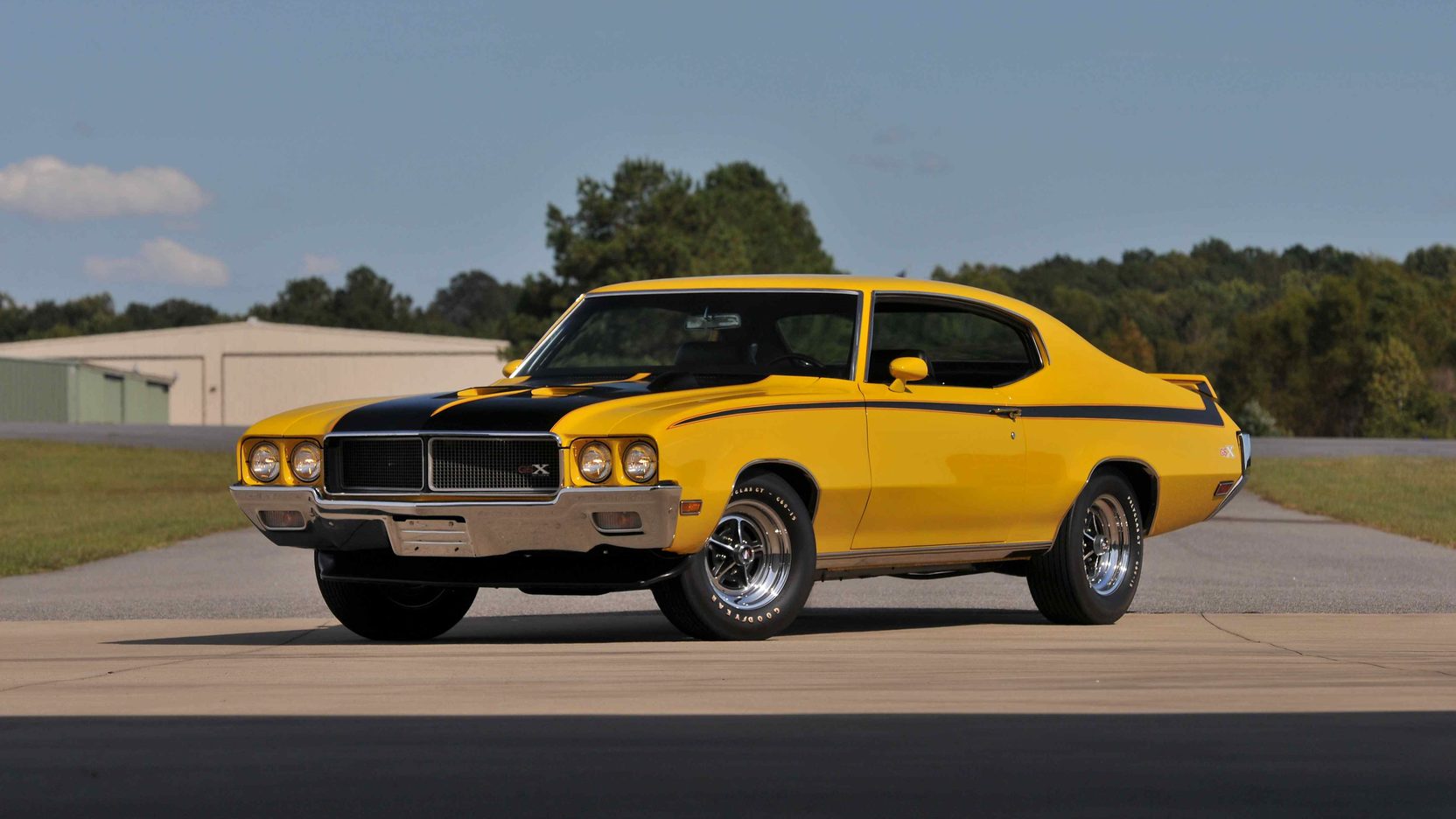
Just like Oldsmobile, Buick went with 455 cubic inches in 1970, and there were two available; the standard GS-455 and the Stage 1. The standard engine in the Gran Sport and the GSX was rated 350 hp and 510 lb-ft of torque. However, the 455 Stage 1, which cost just $115 extra, was the pinnacle of Buick performance at the time. The Stage 1 engine included different cylinder heads with larger valves, a higher compression ratio and a more aggressive camshaft. Buick radically underrated the engine at 360 hp at 4600 rpm and 510 lb-ft of torque at 2800 rpm—the most twist of any production motor at the time.
All GS Buicks came with functional ram air scoops in their hoods as standard equipment and the Stage 1 machines were some of the quickest muscle cars built in the era. Buyers looking for more pizazz to rival their friend’s GTO Judge, could order the GSX package which was available in Apollo White or Saturn Yellow. With its wild colors and black stripes, the GSX with the optional Stage 1 engine was the ultimate Buick muscle car and the price tag showed it at over $4500. Of the 678 GSX Stage 1 cars built in 1970, 400 got the Stage 1 engine, and of those 118 got Muncie four-speeds.
1973 Buick Gran Sport Stage 1
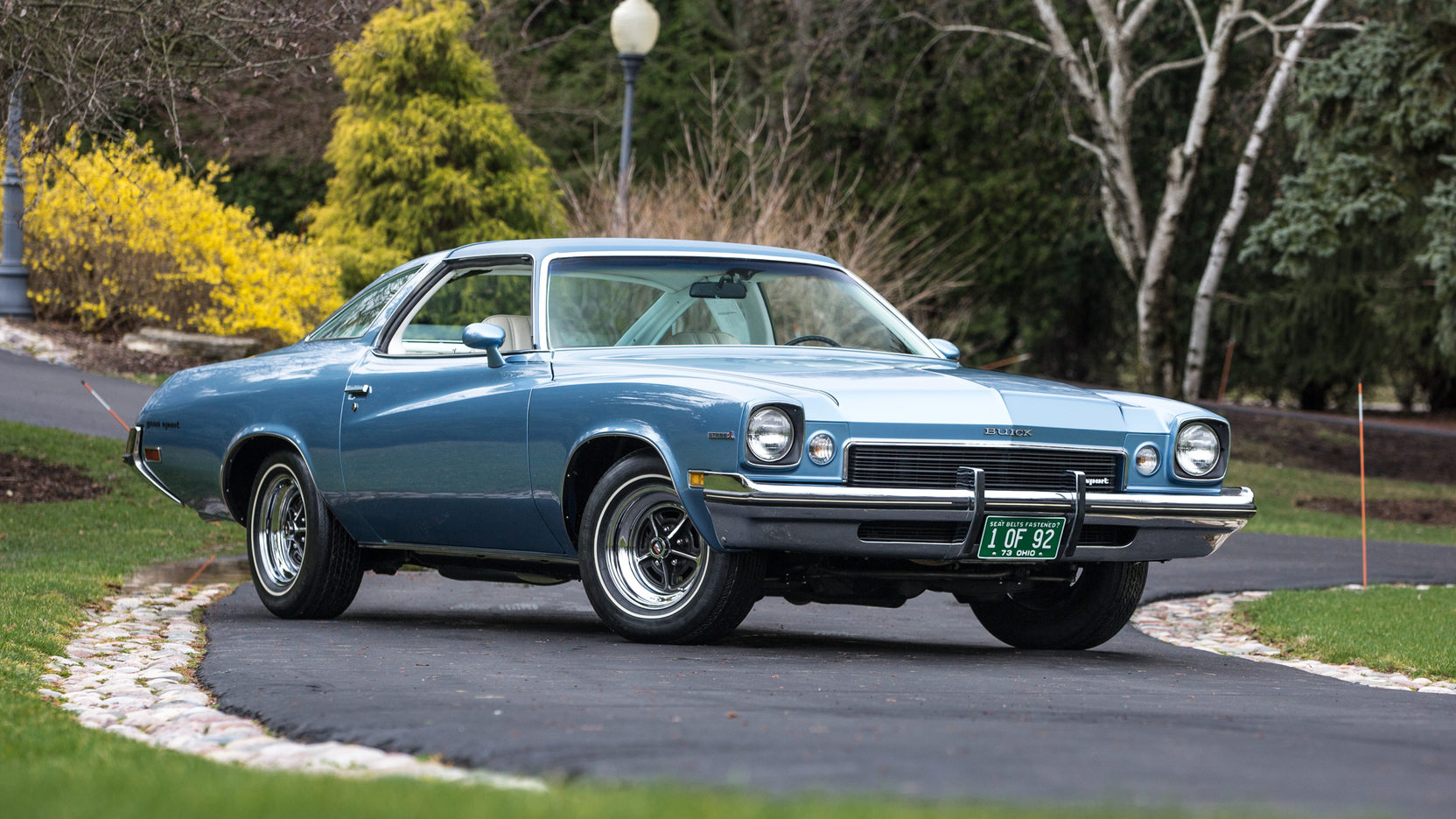
Buick closed out the original muscle car era strong. The GSX didn’t make it past 1972, but the Gran Sport and the Stage 1 engine did. In 1973, the Gran Sport was now on the redesigned “Colonnade” Century, and it was a looker. Four engines were offered, two weak 350s and two 455s. Remember, in 1972 the horsepower ratings went from “gross” to “net” and were down significantly. The first 455 was rated 225 hp, which was healthy for 1973, but the optional Stage 1 version of the engine was rated 270 hp. Buick’s last significant muscle car of the 1970s was available with a Turbo 400 or a Muncie four-speed and the four-speed cars are rare. Only 728 were built in 1973 with the Stage 1 engine and 92 of those with four-speeds. In 1974 production dropped to just 478 Stage 1 cars.
1986 Buick Regal T-type and Grand National

The turbocharged Buick Regal Grand National first appeared in 1982, followed a year later by the T-Type. But nobody really cared until 1986 when Buick added an intercooler to the V-6’s induction system and began eating Corvettes with the upright two-door coupes. This combination was available 1986-87, and it powered the black Grand Nationals, as well as the T-Types and other Turbo Regal models, which could be ordered in any color or combination available. In 1986 the engine was rated 235 hp and it was bumped up to 245 hp in 1987 just to piss off the Corvette engineers down the hallway. Demand took off in 1986 when word got out that these Buicks were the quickest things on the street, but then GM announced that 1987 was the final year for the combination and sales exploded. Buick sold 7896 turbo Regals in 1986, including 5512 Grand Nationals. In 1987 it sold over 20,193 Grand Nationals alone.
1987 Buick GNX

And when it was all over Buick’s engineers sent their beloved rear-wheel-drive, turbocharged Regal out with a mushroom cloud. They pulled 547 Grand Nationals off the assembly line and sent them down the road to ASC/McLaren where they were converted into the Grand National to end all Grand Nationals, the grand high exalted GNX. Modifications included a new rear suspension, 16-inch wheels and tires, wheelwell flares, fender vents and performance instrumentation. The engine was tweaked up too, getting a ceramic turbine for the turbo, more boost and a specific tune. With 276 hp and 360 lb-ft of torque it was the meanest car GM built in the 1980s and it has become the most important American collector car from the decade of big hair and Bon Jovi with prices regularly over $100,000 for the best examples. And for good reason. Able to run 0-60 mph in 5.5 seconds and the quarter mile in 13.43 seconds at 104 mph the GNX wasn’t just quicker than IROCs and other ‘80s muscle cars, it’s the quickest factory stock car on this list.

